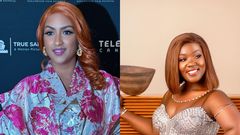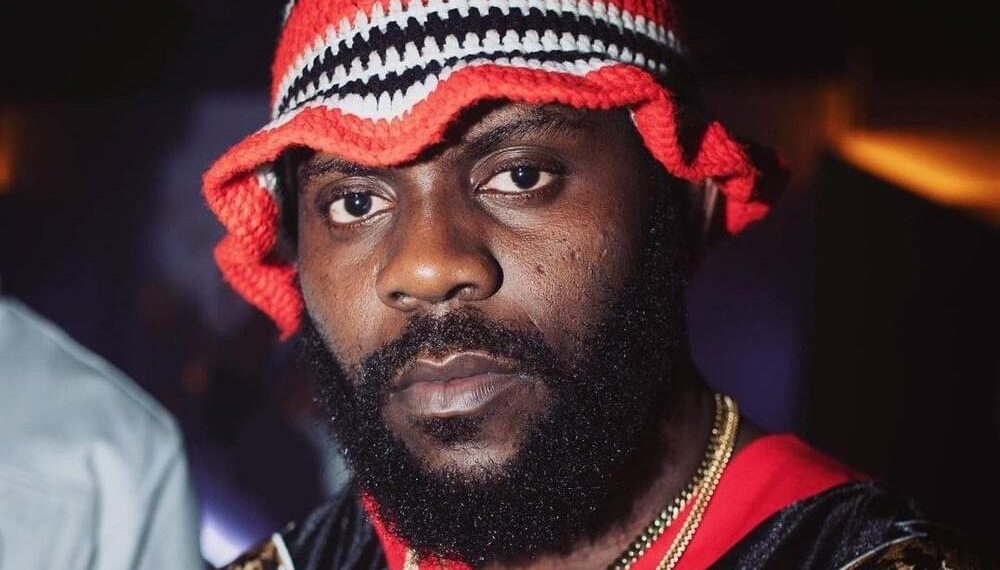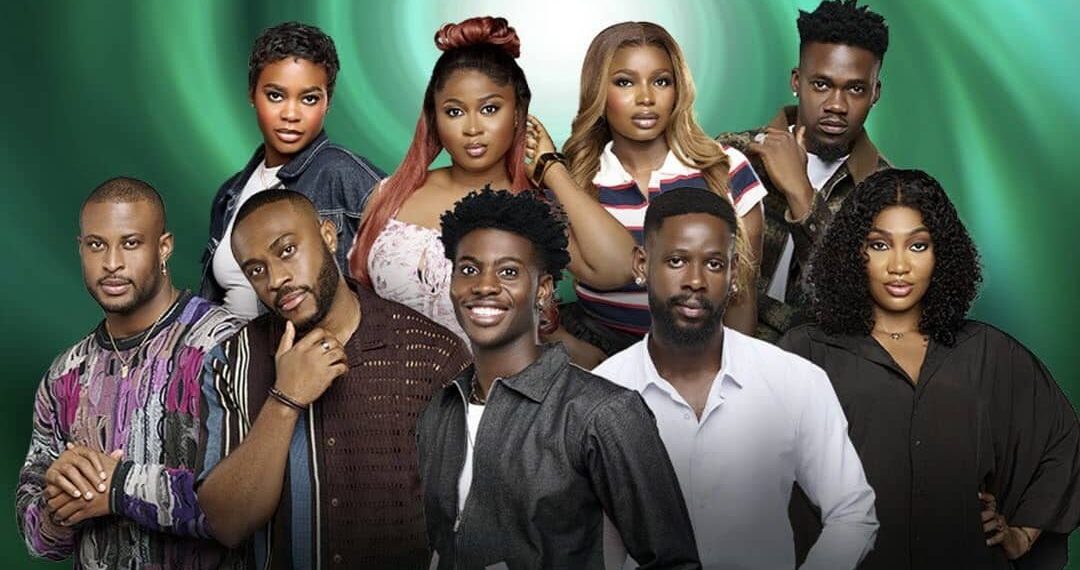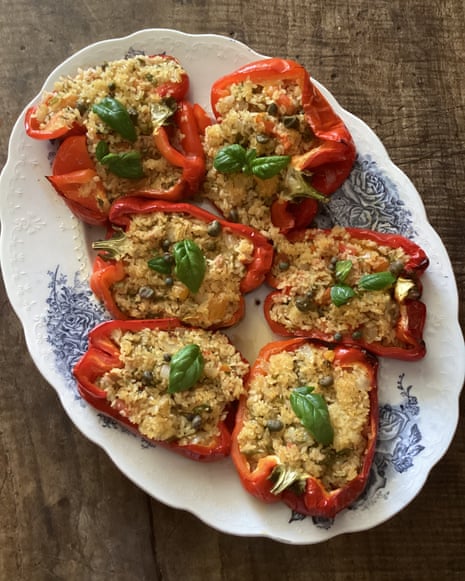Fashion is more than just fabric and thread; it’s an evolving art form that tells stories, celebrates identity, and sets trends across borders. In West Africa, especially Nigeria and Ghana, style has always played a central role in cultural expression, and regional celebrities keep pushing the envelope—blending heritage with 21st-century flair. This week, we spotlight standout fashion moments making waves across social media and style circles, offering inspiration to both young trendsetters and seasoned tastemakers.
Nadia Buari: Effortless Street Style
Nadia Buari, the beloved Ghanaian actress known for her versatile roles and vibrant personality, recently showcased her ability to turn everyday wear into a fashion statement. She stepped out in a tasteful ash-coloured dress teamed with dark sunglasses, striking a playful pout and flashing the iconic peace sign. What makes this look particularly appealing to Nigerian and Ghanaian youth is its approachability—relaxed, minimal, yet striking enough to be memorable.
According to Lagos-based fashion consultant Tolu Ogunlana, “Nadia’s outfit epitomises how West African celebrities are influencing casual wear—taking comfortable pieces and transforming them with attitude and accessories. This is what resonates most with the young, urban crowd in Lagos and Accra.” Street style like Nadia’s continues to find favour among university students and professionals alike, who seek to balance ease with individuality.
Anita Akuffo: Defining African Royalty
Ghanaian media personality Anita Akuffo always uses her platform to uplift African design, and her latest ensemble is no exception. She dazzled in a bold, colourful African print kaba and slit, a classic that never goes out of style, complete with standout headgear that echoes the beauty of Nigerian geles.
Such attire has a storied legacy in West African societies. According to historian Dr. Nneka Iroanya, “The kaba and slit is more than a fashion choice—it’s a symbol of cultural pride and a nod to Ghana’s enduring textile heritage.” When celebrities like Anita opt for traditional outfits at public events, they empower local designers and underscore the ongoing relevance of indigenous fabrics in a fast-globalizing world.
Nigerian and Ghanaian celebrities have helped rekindle interest in Ankara, kente, adire, and aso-oke, making traditional wear not just suitable for weddings and ceremonies, but for red carpets and daytime outings as well. This fusion of tradition and modernity remains a driving force within African fashion.
Emelia Brobbey: Understated Chic
Versatility is important for many Nigerians and Ghanaians juggling multiple roles and responsibilities daily. Emelia Brobbey, celebrated actress and singer, delivered a masterclass in polished minimalism, pairing a crisp striped shirt with a white midi skirt.
Fashion commentator Adaora Nwosu observes, “Simplicity with subtle detail, like Emelia’s chosen look, is timeless and flattering on all body types. For professionals in Abuja, Lagos, or Kumasi, such outfits transition seamlessly from meetings to after-hours events.” Her clean, fresh choices highlight a growing trend in West African cities—a newfound appreciation for soft power dressing that radiates quiet confidence.
As reported by the West Africa Fashion Council, minimalist trends are growing in popularity across regional fashion weeks, with local designers focusing on well-tailored basics that allow wearers to accessorise creatively, reflecting personal taste and heritage.
Tima Kumkum: Futuristic Glamour
Ghanaian TV host Tima Kumkum chose to shine—quite literally—in a monochromatic silver ensemble featuring a sculpted peplum top and sleek trousers. Metallic tones have been making a comeback on red carpets from Lagos to Johannesburg, serving as a striking alternative to more predictable palettes.
Fashion stylist and Abuja native Jide Akintola comments, “Silver suits bold personalities, and Tima nails that futuristic yet feminine balance Africa is beginning to embrace—especially as Afrobeats and African film industry stars make their mark globally.” The popularity of such fabrics is on the rise according to local textile merchants at Oshodi Market, who report an uptick in requests for metallic fabrics ahead of party season.
Tima’s look also reflects the aspirations of African women aiming to stand out in professional and social settings, redefining what glamour means on the continent.
Juliet Ibrahim: Homage to Heritage
Pan-African actress and humanitarian Juliet Ibrahim turned heads in a charming pink and white buba dress, a look many Nigerians will recognise for its roots in Yoruba tradition. Her choice of soft, harmonious hues enhanced her complexion and signaled a return to delicate, classic lines that celebrate womanhood and ancestral craft.
Dr. Folashade Akinyemi, a sociologist specializing in cultural fashion, explains, “The buba and wrapper combination is a powerful yet understated way of expressing identity and status. By favouring such attire, celebrities like Juliet are increasing its appeal among young women and international fashion enthusiasts.” Nigeria’s own growing fashion industry has seen buba and iro reimagined for high street and global runways, blending nostalgia with modern silhouettes.
Juliet’s fashion moment illustrates that traditional does not mean outdated; rather, it’s a celebration of enduring style through fresh interpretation.
Each of these celebrities embodies a facet of Africa’s vibrant fashion tapestry—whether it’s Nadia’s playful nonchalance, Anita’s regal presence, Emelia’s sophisticated minimalism, Tima’s high-shine glamour, or Juliet’s embrace of tradition. Nigerian and Ghanaian designers continuously innovating with African fabrics, tailoring, and accessories means there’s truly a look for every mood, season, and occasion.
Internationally, observers have taken note of West Africa’s fashion renaissance: According to a 2023 report by the African Development Bank, the West African fashion industry is valued at over $31 billion and employs millions across the continent. With such dynamic energy, local icons have become global ambassadors of style.
Of course, challenges remain—including access to high-quality materials, copyright concerns, and the need for broader international collaborations. But with continued support from fans, designers, and policy-makers, the creativity and vitality of West African fashion shows no sign of slowing down.
Which style resonates most with you—casual streetwear, classic Ankara, or bold metallics? How do you express your individuality through clothing? Drop your thoughts below and join the conversation as African fashion continues to inspire the world.
Love seeing how African stars raise the bar for style? Let us know which look caught your eye or share your own fashion tips in the comments below! Want your unique story, personal experience, or fashion journey featured on our platform—or do you have a gist that could go viral? Don’t hesitate to reach out: email us at story@nowahalazone.com for story submissions or sales.
Keep the conversation going and stay up to date with the latest in African entertainment, fashion, and lifestyle—follow us on Facebook, X (Twitter), and Instagram!










